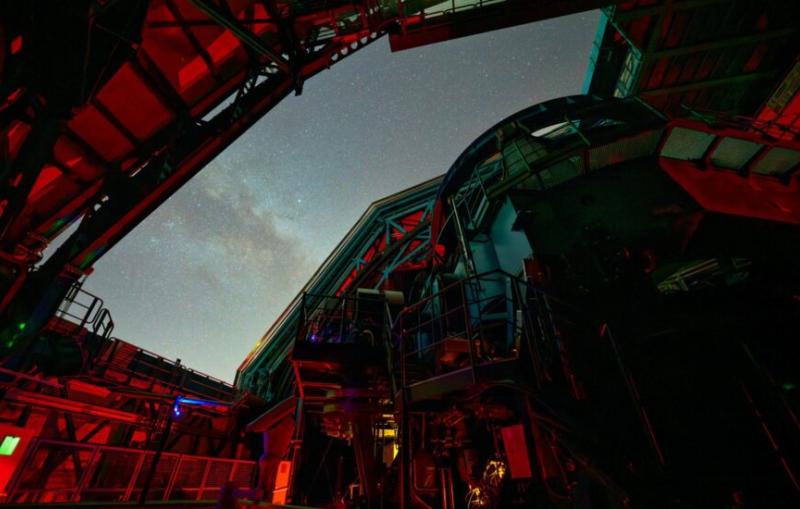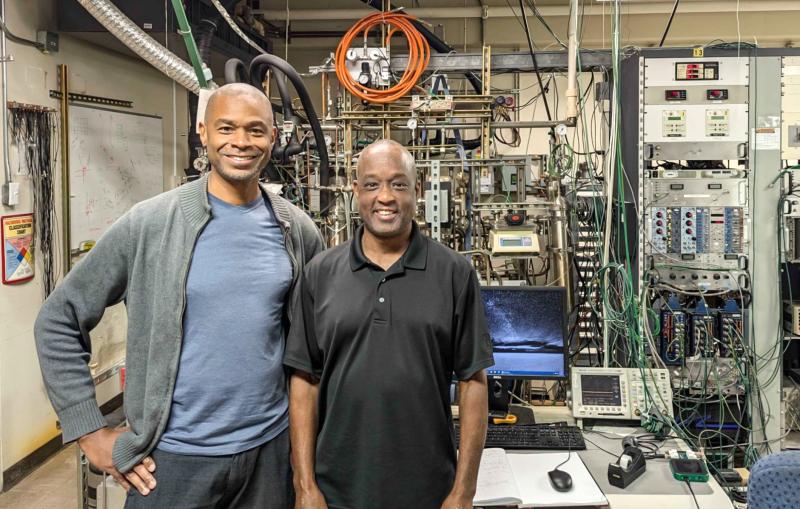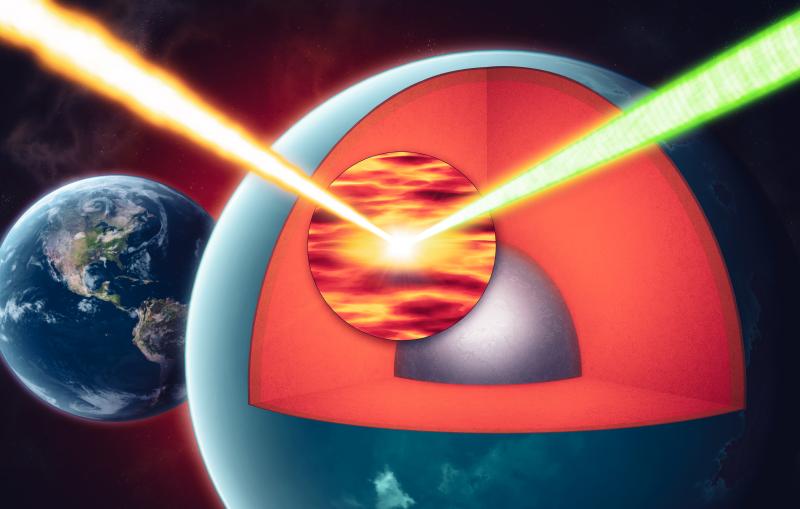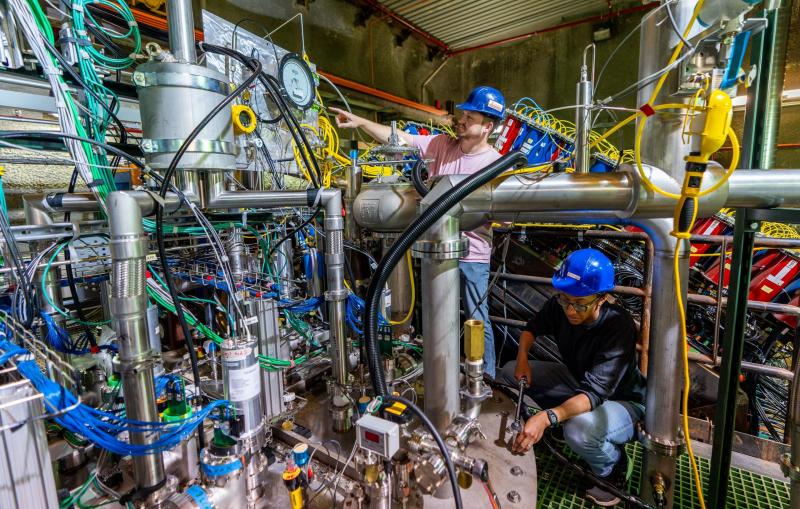SLAC theorist Lance Dixon receives Galileo Galilei Medal
Together with two long-time collaborators, he is recognized for work that helps us understand the strong nuclear force.
By Manuel Gnida
Lance Dixon, professor of particle physics and astrophysics at the Department of Energy’s SLAC National Accelerator Laboratory and Stanford University, will receive the 2023 Galileo Galilei Medal for his contributions to theoretical physics. The award was announced by the Italian National Institute of Nuclear Physics (INFN) on Feb. 15 – the 459th birthday of Galileo, one of the founding figures of the scientific method and of modern physics.
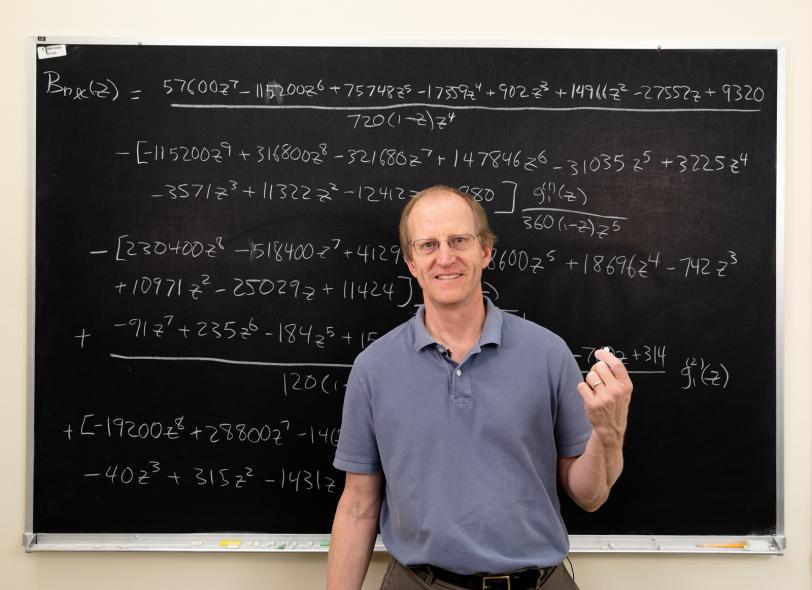
Two of Dixon’s long-time collaborators – Zvi Bern at the University of California, Los Angeles, and David Kosower at CEA Paris-Saclay, France – will also receive the medal. The trio is cited “for the development of powerful methods for high-order perturbative calculations in quantum field theory,” the award announcement said.
“It’s exciting to get this award and join the company of previous winners who have made fantastic contributions to science,” Dixon said. “To get the medal with Zvi and David makes it extra special.”
Having his name associated with Galileo also feels quite humbling, Dixon added. He recalled frequently pointing his telescope at Jupiter to observe its Galilean moons during his childhood.
Dixon's body of work doesn’t look at phenomena of planetary dimensions, though. In contrast, it contributes to our understanding of our world on the smallest scales – a realm governed by the strong nuclear force.
Making complex calculations simpler
As one of the four fundamental forces in nature, the strong force holds protons and neutrons together in atomic nuclei and is responsible for nuclear fission and fusion processes. On a more detailed level, it tells us what’s going on inside protons and neutrons, where quarks, one of the most basic building blocks of matter, and gluons, which carry the strong force, constantly bump into each other.
To understand how this bubbling soup of particles behaves at particle colliders, physicists turn to perturbation theory, in which they describe the interaction processes as a sum of individual contributions, starting with the simplest but most dominant processes and adding more and more complex, higher-order processes that add increasingly more detail and precision.
In the late 1940s, American physicist Richard Feynman introduced a method, in which the terms in this sum were represented by diagrams that made it easier to keep track of the calculations. However, these Feynman diagrams quickly become very challenging to compute for higher order terms. By the late 1980s, theorists were only able to accurately predict processes that involved two particles emerging from collisions in the quark-gluon soup.
That changed with Bern, Dixon and Kosower in 1993. “Following up on work Zvi and David had done earlier, we began developing new methods that looked at the entire series of Feynman diagrams and chopped it up and rearranged it into new pieces that were each simpler and that we could compute more efficiently,” Dixon explained. “With that, we were able to calculate and understand the process of two gluons going in and three gluons going out.”
Over the years, many researchers fleshed out the approach further and automated it. Today, they can routinely compute processes that have up to six particles in the final state – a level of detail that is much needed for understanding the complex events in modern particle physics experiments, such as at the Large Hadron Collider, the world’s largest particle collider at CERN in Europe.
Dixon and collaborators are now planning to use machine learning to precisely understand the mathematical structure in the high-order terms they can already compute.
In addition to shedding light on processes involving the strong force, Bern, Dixon and their colleagues have also exploited their approach to test formulations of a quantum theory of gravity, the only fundamental force that cannot be described with the mathematical tools of the Standard Model.
Honoring advances in physics
Bern, Dixon and Kosower, who already received the Sakurai Prize in 2014, will be handed their newest award later this year during a ceremony hosted by INFN’s Galileo Galilei Institute in Florence, Italy. The medal they will receive was crafted from bronze by a traditional Florentine workshop and is decorated with Galileo’s countenance.
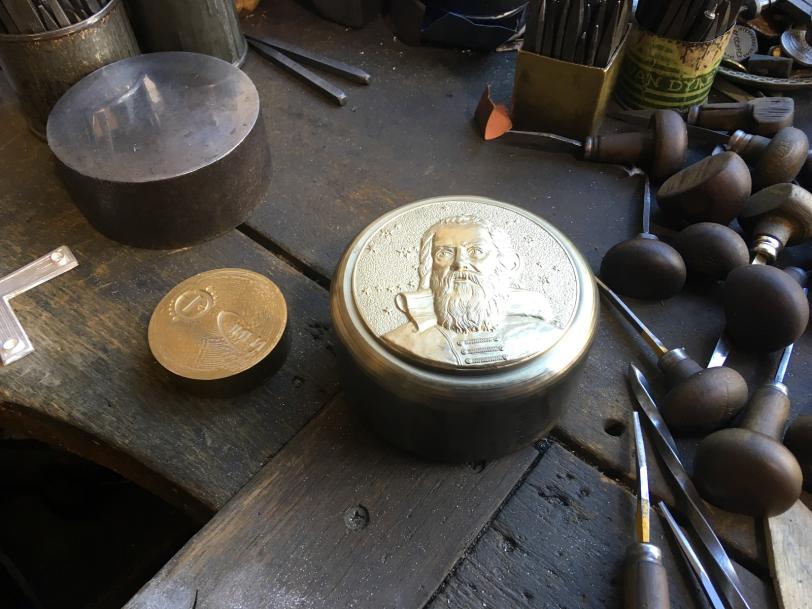
The Galileo Galilei Medal award was created in 2019 to honor the famous Italian polymath. Every other year, it recognizes up to three scientists, who in the 25 years prior have achieved outstanding results in areas of theoretical physics relevant to INFN’s research.
The first recipient was Juan Maldacena, who discovered connections between gravity and quantum field theory. The 2021 medal went to Alessandra Buonanno, Thibault Damour and Frans Pretorius for their description of two colliding black holes – work that was key to understanding experimental data of the VIRGO and LIGO gravitational wave detectors.
For questions or comments, contact the SLAC Office of Communications at communications@slac.stanford.edu.
About SLAC
SLAC National Accelerator Laboratory explores how the universe works at the biggest, smallest and fastest scales and invents powerful tools used by researchers around the globe. As world leaders in ultrafast science and bold explorers of the physics of the universe, we forge new ground in understanding our origins and building a healthier and more sustainable future. Our discovery and innovation help develop new materials and chemical processes and open unprecedented views of the cosmos and life’s most delicate machinery. Building on more than 60 years of visionary research, we help shape the future by advancing areas such as quantum technology, scientific computing and the development of next-generation accelerators.
SLAC is operated by Stanford University for the U.S. Department of Energy’s Office of Science. The Office of Science is the single largest supporter of basic research in the physical sciences in the United States and is working to address some of the most pressing challenges of our time.

